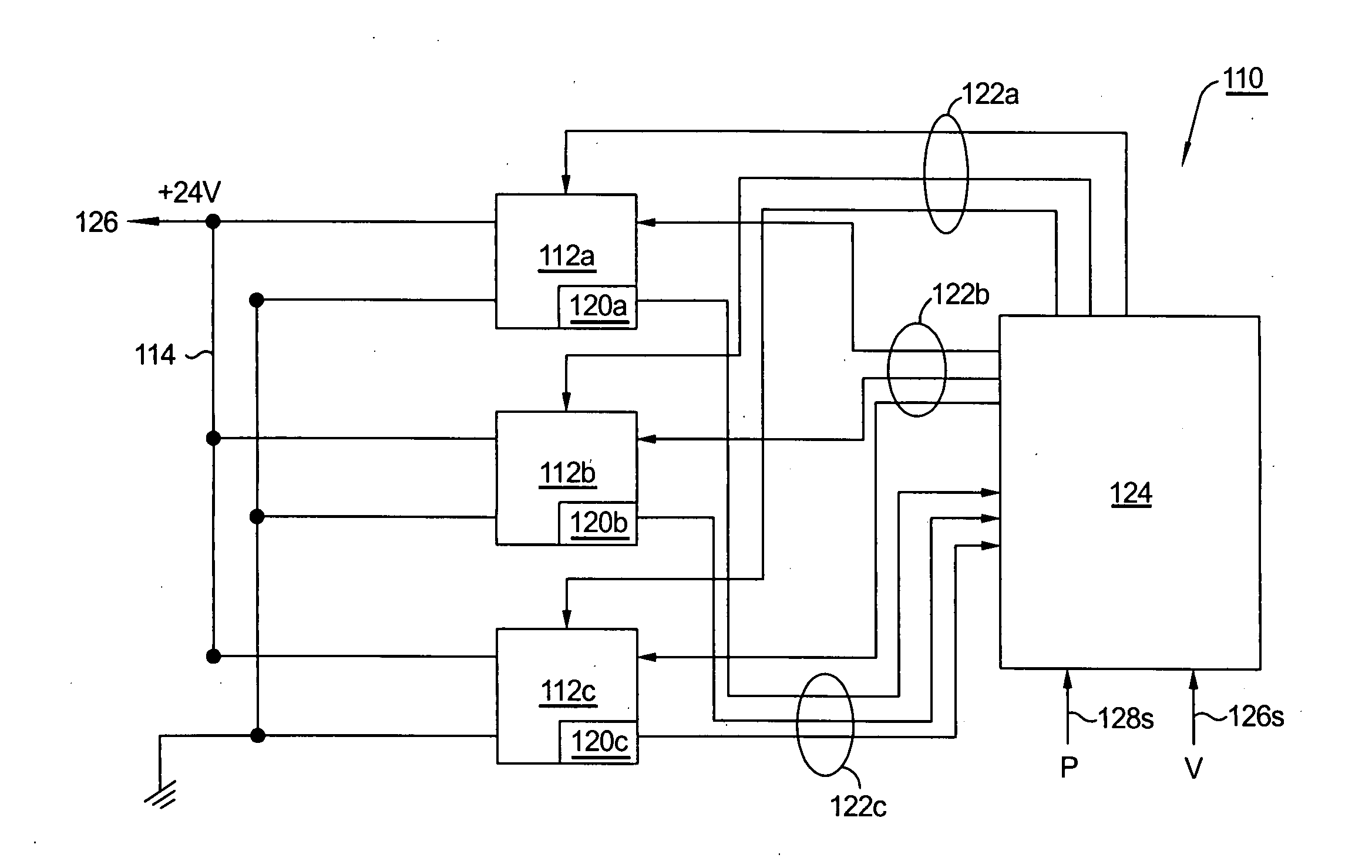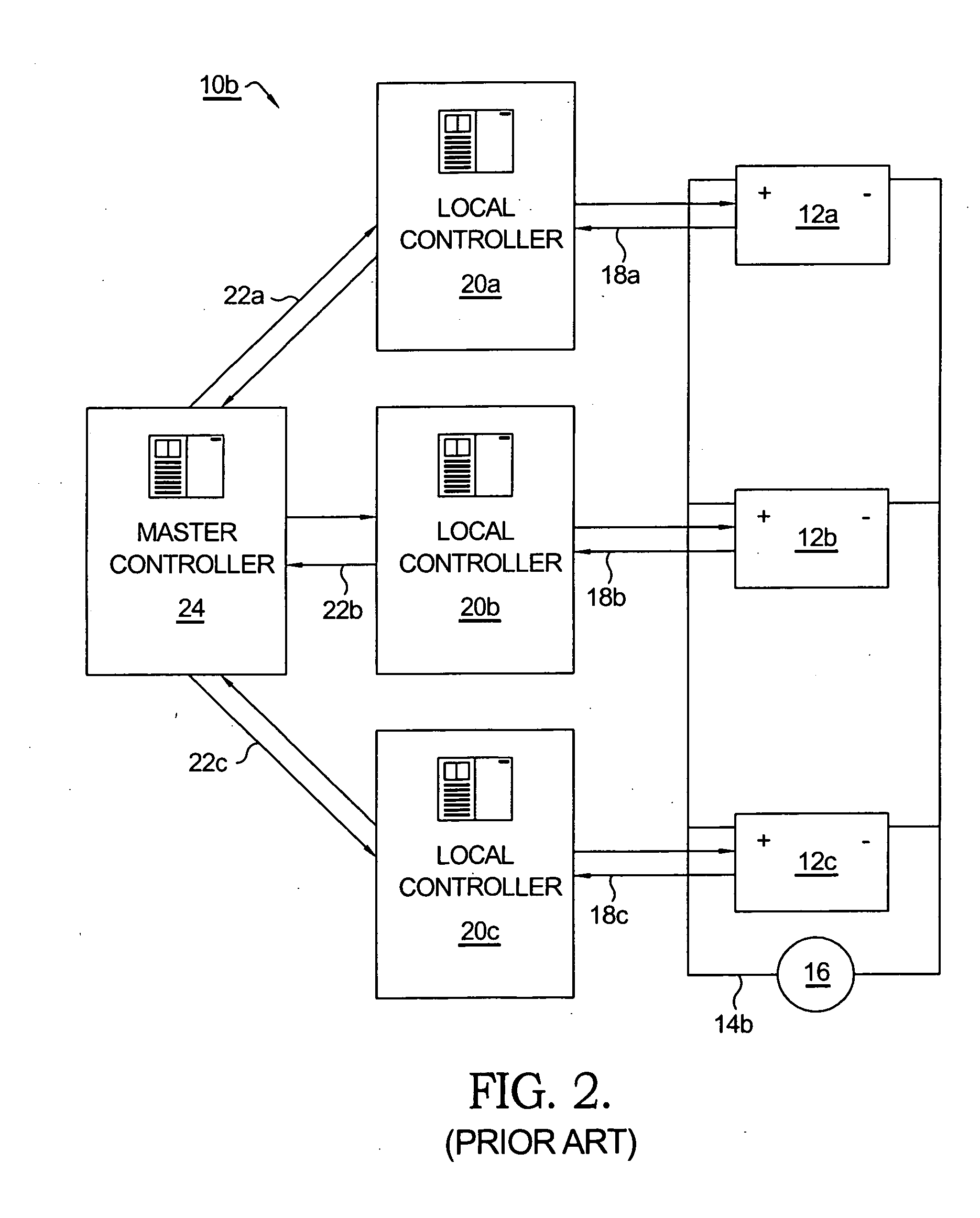Method and apparatus for controlling a fuel cell system having a variable number of parallel-connected modules
a fuel cell and variable number technology, applied in the field of fuel cell modules, can solve the problems of system failure, system failure to operate at a fixed voltage, and inability to consider the operation efficiency as a function of load, so as to minimize the vulnerability of the overall system, minimize maintenance and/or module replacement, and maximize the life of the overall system
- Summary
- Abstract
- Description
- Claims
- Application Information
AI Technical Summary
Benefits of technology
Problems solved by technology
Method used
Image
Examples
Embodiment Construction
[0033]The benefits and advantages of an APU system comprising a plurality of APU modules, and method for operation thereof, in accordance with the invention will be better appreciated after first considering a prior art multiple-module APU system.
[0034]Referring to FIG. 1, a first prior art APU system 10a comprises a plurality of fuel cell modules 12a, 12b, 12c connected in a circuit 14a in series to drive a load 16. Each fuel cell module is connected via communication lines 18a, 18b, 18c to a local controller 20a, 20b, 20c which in turn is connected via communication lines 22a, 22b, 22c to a master controller 24. The communication lines 18a, 18b, 18c, 22a, 22b, 22c are used herein to indicate generally communications between the master controller and the local controllers and between the local controllers and the associated fuel cell modules, and hence are to be construed generally. For example, each local controller may send commands or requests to respective fuel cells and their ...
PUM
 Login to View More
Login to View More Abstract
Description
Claims
Application Information
 Login to View More
Login to View More - R&D
- Intellectual Property
- Life Sciences
- Materials
- Tech Scout
- Unparalleled Data Quality
- Higher Quality Content
- 60% Fewer Hallucinations
Browse by: Latest US Patents, China's latest patents, Technical Efficacy Thesaurus, Application Domain, Technology Topic, Popular Technical Reports.
© 2025 PatSnap. All rights reserved.Legal|Privacy policy|Modern Slavery Act Transparency Statement|Sitemap|About US| Contact US: help@patsnap.com



